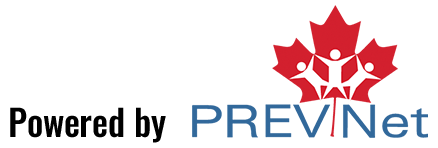PREVNet is located at Queen’s University, situated on traditional, unceded Anishinaabe and Haudenosaunee Territory. As settlers, we are grateful for the opportunity to meet, work, and play here, and we thank the generations of Indigenous peoples who have taken care of this land since time immemorial.
June 21, 2021 marks the 25th anniversary National Indigenous Peoples Day. However, many Indigenous communities have celebrated the summer solstice and their culture and heritage at this time of year for generations. While Indigenous groups each have their own heritage, language, cultural practices, and spiritual beliefs, National Indigenous Peoples Day allows the nation to recognize the importance of all Indigenous communities and celebrate Indigenous people as a whole.
On this day, we offer gratitude, respect, and appreciation for all Indigenous communities.
The day is also a time to recognize “Canada’s colonial history, the contemporary issues and realities of Indigenous Peoples, and Indigenous futurism.” We encourage all Canadians to make it a priority to understand and embrace Indigenous history and to listen, to learn, and to act to ensure the rights of Indigenous people are recognized and implemented.
National Indigenous Peoples Day is a day to come together and celebrate with one another. While ongoing physical distancing restrictions may prevent gatherings in many locations, virtual events allow us to celebrate, connect, and learn no matter where we are. Here are some ways to commemorate National Indigenous Peoples Day this weekend:
Celebrate
- The Summer Solstice Indigenous Festival (SSIF) brings together Indigenous artists, performers, educators, students, and community members to share knowledge and celebrate Canada’s diverse Indigenous cultures. Visit the website for an online marketplace, virtual workshops, events, and more.
- The Canadian Museum of History is partnering with Indigenous Experiences and the Summer Solstice Indigenous Festival, creating activities to learn more about and celebrate the histories and cultures of First Nations, Métis and Inuit peoples. See performances and family activities in-person at the Museum, as well as online Paint Night workshops, artist videos, exhibitions, crafts and film.
- Kids can participate in games and activities with the Celebrating Indigenous Peoples in Canada: Learning and Activity Guide.
- Due to ongoing physical distancing restrictions, many events are now being held online! Here are just some events you can participate in no matter where you are:
- Banff Centre for Arts and Creativity’s National Indigenous Peoples Day virtual events include workshops, film screenings, musical events, an Indigenous market, and more
- The National Indigenous Peoples Day virtual ceremony hosted by the City of Barrie includes fiddling and drumming performances
- The City of Surrey is hosting a virtual National Indigenous Peoples Day celebrating featuring dancers, drumming, and more
- Langara College’s National Indigenous Peoples Day virtual events include a book club, sharing circle, and story time
- MacEwan University, NorQuest College, Northern Alberta Institute of Technology (NAIT), University of Alberta and Concordia University of Edmonton are partnering for a month of virtual activities to celebrate National Indigenous Month, including a virtual presentation by Notorious Cree, panels, instructional videos, and more.
Learn
- Review the Truth and Reconciliation Commission of Canada Calls to Action. Spirit Bear’s Guide to the Truth and Reconciliation Commission of Canada Calls to Action offers an easy-to-understand option for children.
- If you’re non-Indigenous, learn more about whose land you’re on. You can learn about Indigenous Nations, territories, and Indigenous communities with websites such as Whose Land and Native Land.
- Many Indigenous languages are spoken in Canada. The Algonquian language family, which includes Cree, Ojibway, Innu and Oji-Cree, is the most commonly spoken language family, followed by Inuktut and Athapaskan language (source). Resources such as YouTube and Duolingo can help you learn a few words and phrases (or more!) in a new language.
- Read a book by an Indigenous author. Megan Tipler has created an Indigenous Texts document of books for youth, the CBC created a list of 35 Books to Read for National Indigenous History Month, and Crown-Indigenous Relations and Northern Affairs Canada has a Reading List. Additionally, lists of book recommendations can be found by using #IndigenousReads, #ReadIndigenous, and Reading for Reconciliation on social media and search engines.
- The University of Alberta offers Indigenous Canada courses online, some of which are free!
- Check out these “Rule of Law” learning resources from Dr. Cindy Blackstock, Professor of Social Work at McGill University.
Art
- Follow Indigenous creators and influencers on Instagram, such as Notorious Cree, Shina Nova, Sherry Mckay, and more
- Listen to a podcast, such as Telling our Twisted Histories, hosted by Kaniehti:io Horn
- Listen to fantastic Indigenous musicians, such as Tanya Tagaq, Drezus, Buffy Sainte-Marie, A Tribe Called Red, and more.
- Watch an Indigenous made film or documentary, like Angry Inuk, The Grizzlies, Kayak to Klemtu, and more. Right now, CBC Gem is featuring a National Indigenous History Month collection.
- Participate in a culinary or arts and crafts workshop, or watch a pre-recorded video to follow along on your own!
- Laugh along with your favourite Indigenous comedians.
- Support Indigenous artists and Indigenous-owned businesses in your area!
National Indigenous History Month x Pride Month
In addition to National Indigenous History Month, June is also Pride Month. Because of systemic oppression, marginalized youth are at a higher risk of being victimized by bullying, harassment, and violence. And this is especially true for youth at a cross-section of multiple marginalized identities, such as being Indigenous and 2SLGBTQ+.
As we continue to work toward a future that is better, safer, and more affirming for all, here are some resources for Indigenous 2SLGBTQ+ youth:
- The Enchanté Network connects and supports over 120 pride centres and 2SLGBTQ+ service providers across Canada. This month, the Enchanté Network is unveiling #PrideOnTurtleIsland — a campaign celebrating the work of 2 Spirit and Indigi-queer leaders & organizations.
- LGBT Youthline wants you to #Dare2Imagine a world where youth of all genders and sexualities are supported and celebrated. Check out their social mediafor resources centering Indigenous youth in Pride celebrations.
- Watch this video from them. about What is Two Spirit?
- Read about “Two Spirit Role Models” James Makokis and Anthony Johnson



